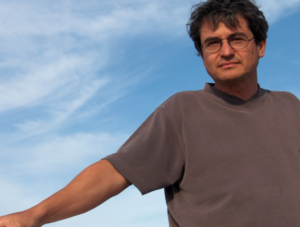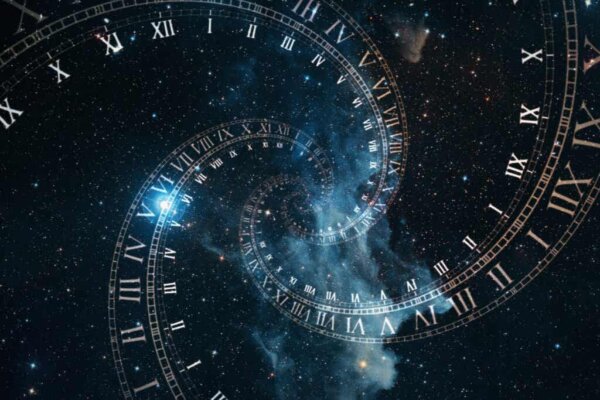Carlo Rovelli, the Italian Theoretical Physicist

Although comparisons are odious, some people think Carlo Rovelli and Stephen Hawking are alike. It’s probably because they both studied physics, became science communicators, and are rather lucid and inspiring contemporary minds.
One of Carlo Rovelli’s distinctive features is the bridge he built between the knowledge of physics and literary poetics. His books are a space in which science and lyric mix. In addition, he wielded some provocative and fascinating hypotheses from quantum physics, his area of study.
For some time now, physics has become a field full of surprises and fantastic images. Carlo Rovelli is one of those physicists who astound with their findings on the workings of matter and the universe.
Like Stephen Hawking, Rovelli devotes much of his study to a phenomenon that remains enigmatic: time.
“We’re made of the same stardust of which all things are made, and when we’re immersed in suffering or when we’re experiencing intense joy, we’re being nothing other than what we can’t help but be: a part of our world.”
-Carlo Rovelli-

Who’s Carlo Rovelli?
First and foremost, Carlo Rovelli has made thousands or perhaps millions of people fall in love with physics. His books Seven Brief Lessons on Physics and The Order of Time are so well written and enjoyable that many people wonder why nobody explained things this simply back in school.
Rovelli grew up in Verona, Italy, but also lived in the United States and France. He’s one of the founders of the theory of loop quantum gravity. Also, his works are now available in more than 30 languages and scientists and poets equally enjoy them.
Carlo also writes about the history and philosophy of science. He’s a critical thinker who ended up in jail twice when he was younger. Once due to his subversive views and the other for refusing to do military service in Italy. In one of his many interviews, he said he once dreamt of being homeless.
Time: a mysterious substance
Carlo Rovelli has deeply analyzed time. He usually begins his presentations by talking about the most popular and widespread Western conception of time: linearity. He even uses a rope to explain it. Then, he begins to add beads to it: one bead is today, another one a month ago, another one a year ago, and so on.
Then, with another rope, he does the same, but this time looking forward: one count is tomorrow, another in a month, another when he dies, another after he’s dead, and so on. This is how Newton conceived time: a continuous line with which people flowed simultaneously.
Then Einstein came along and things changed. To graph his contribution, Rovelli hangs a cloth from ropes and says it’s what time is like. It isn’t a line, nor a rope, but a surface that’s not flat, but curved and has holes. Thus, there’s no such thing as time as such, only space-time.
According to him, time passes more slowly lower on the curve. In turn, it goes by faster in the bulging areas or “above”. Finally, time passes rather quickly in the holes but doesn’t at the edges. Thus, time passes “by leaps and bounds” in the world of the infinitely small.
At this point, Rovelli usually asks: “What’s time?” His response is: “We don’t know”.
Physicist and thinker
As we explained above, Carlo Rovelli is the author of the “theory of loop quantum gravity”. Its goal is to achieve a synthesis between the theory of relativity and quantum mechanics. These are the two great revelations of physics of the last century.
Another of Rovelli’s facets is his approach to the philosophy of science. He also refers to religious thought from the perspective of how this field often seems to oppose science.
In this regard, he points out that there’s no real contradiction between adhering to science and believing that a divine entity created the universe. Especially because it remains a mystery and science is far from deciphering it.
The real contradiction is the position of religion and science towards the truth. Believers claim to have absolute truths about reality. In turn, science is an eternal question and starts from the idea of utmost ignorance.
All cited sources were thoroughly reviewed by our team to ensure their quality, reliability, currency, and validity. The bibliography of this article was considered reliable and of academic or scientific accuracy.
Rovelli, C. (2003). Loop quantum gravity. Quantum Gravity, Physics World.
Rovelli, C. (2018). El orden del tiempo. (Vol. 518). Anagrama.
This text is provided for informational purposes only and does not replace consultation with a professional. If in doubt, consult your specialist.








